
Suspension Frioul
Natasha Marie Llorens
The essay by independent curator Natasha Marie Llorens for the Roots to Routes project in Marseille (an event of 'Manifesta 13' parallel programme)
The essay Suspension Frioul, written by independent curator Natasha Marie Llorens, was prepared during quarantine as part of the Roots to Routes project. Roots to Routes is a collaboration between art professionals from the Baltic States and the art environment of Marseilles, including a series of events – exhibitions, performances, film programmes, etc. – which was planned to be part of the European Art Biennale ‘Manifesta 13’ parallel programme this summer in Marseille. Due to Covid-19 it has been postponed to the autumn (programme dates: 28/29 August – 25 October), but some of the collaborations have already taken place online. Unforeseen and changing circumstances made the project creators – curators Maija Rudovska, Juste Kostikovaite and Merilin Talumaa – react to the difficult situation by inviting a number of writers to reflect on the main motif of the project – roots and paths, and their interrelationship. Llorens’ text is a personal, yearning reflection on the facade and history of Marseilles' colonialism that formed this unique city, linking the situation caused by Covid-19 to the plague that struck the area exactly 300 years ago.
Natasha Marie Llorens is an independent curator and writer of French-American descent. She researches and writes on contemporary art and film in North Africa and the Middle East, feminist and queer politics in art, philosophies of violence, postcolonial curatorial practice, and other topics. Her writing has been published in ArtReview, Modern Painters, BOMB Magazine, Pastelegram, WdW Review, Contemporary Art Stavanger, Art Agenda, and elsewhere. Llorens holds a master's degree from the Center for Curatorial Studies at Bard and is currently a doctoral candidate at Columbia University.
Maija Rudovska
Summer comes to Marseille more slowly than one might think. The sea that rims the city holds onto the cold, staying icy through late May or early June. To swim before the sea has relinquished its seasonal impenetrability is breathtaking, literally, forcing swimmers to acknowledge that they had trespassed. The experience is a corporeal reminder that the glorious Mediterranean appearance of Marseille masks the alienation that exists between the city and that which lays beyond its shoreline, attenuated by the sun but only temporarily.
During the summer of 2015, I was briefly in love with a woman who loved the sea. I had not yet taught myself to lap swim out into the many inlets that edge the shore, or to marvel at the aging iron World War II defensive detritus at the bottom of the cove off the Anse of Malmousque as I swam out to deeper water. I had learned to swim in this sea, but so long ago that I had forgotten how to tolerate its difference from the city. I would watch my lover strike out across the blue water with the confidence of a trained swimmer and marvel at her fearlessness in the face of that difference.
Photo: Natasha Marie Lloren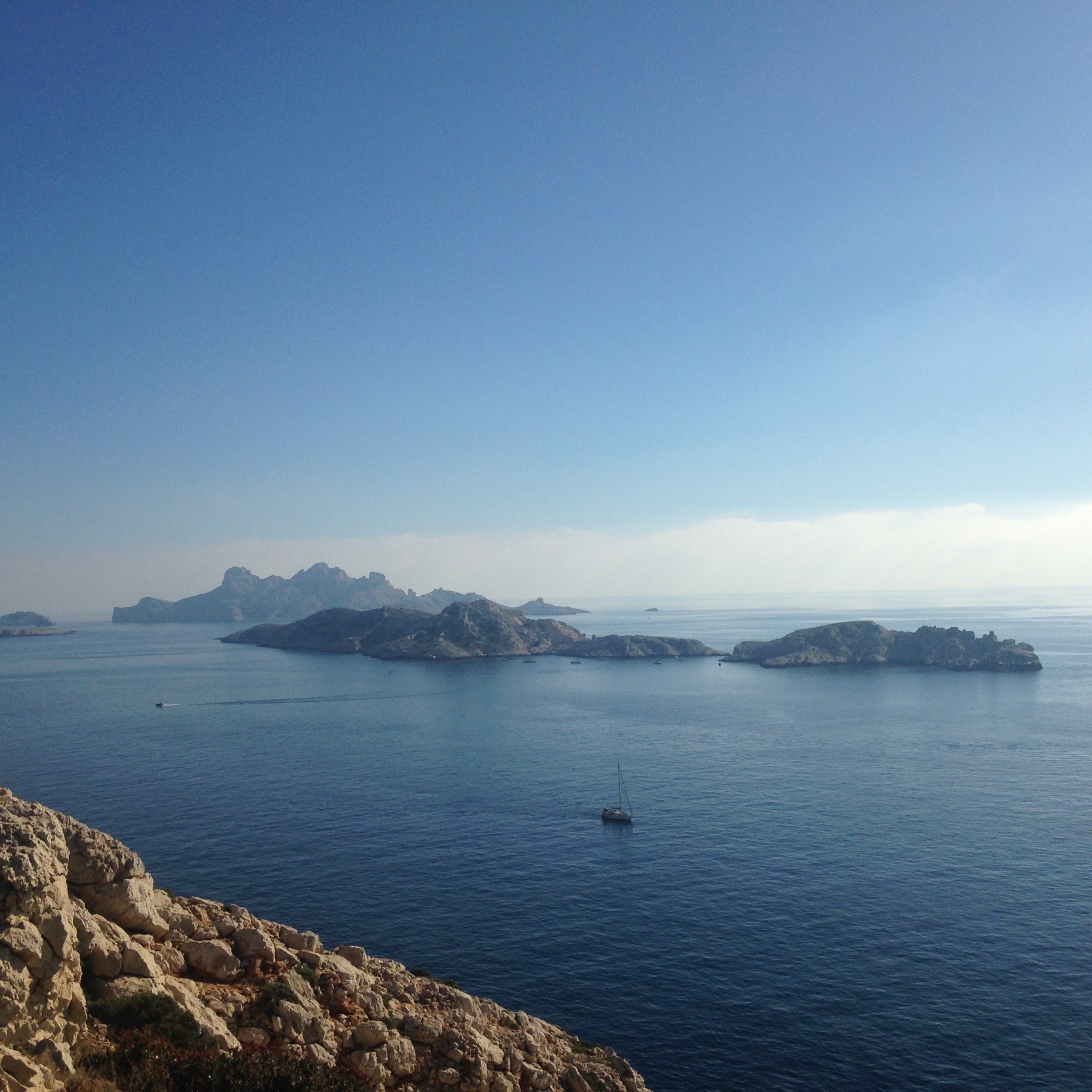
In July of that summer, she volunteered at an experimental music festival held annually in Marseille, called MIMI. For many years, the festival has taken place in the ruins of the old Caroline Hospital, the quarantine facilities on the Frioûl Islands. All that remains of the hospital now are stone walls perched on the crest of ridge of the islands’ rocky Mediterranean landscape. The grounds are not typically open to the public, and so it was the first time in three decades of using the bare archipelago as an escape from the city that I had been allowed inside.
Besides getting access to all the concerts, festival volunteers are given rudimentary accommodation and permission to stay in the ruins overnight. As a romantic hanger-on, this reprieve of the usually strict access rules also applied to me. After the last concert, we climbed to the section of stone and sky in which we had been allotted a mattress. My head was ringing with echoes of the last furious set by the Acid Mothers Temple and the Cosmic Inferno as we ascended. I asked what the hospital had been used for, running one hand across a stone wall no longer supporting a roof. Beyond a vague sense of maritime quarantine, my lover didn’t know, and that evening it didn’t really matter.
Photo: Natasha Marie Lloren
Marseille is a chaotic city, ever vulnerable to the waves of immigrants that break against its rocky coastline. One consequence of this chaos is that it is structured by invisible recesses, linguistic and communitarian interior zones in the fabric of the city. A newcomer would often be struck by the permissiveness of Marseille only to discover, a year or two on, the opaque nature of political power in the city, and its centralization in the hands of a powerful elite descended from the beneficiaries of colonialism. It is a city that projects multicultural openness while carefully controlling access to its paradigmatic spaces of power.
The Caroline Hospital is one such space. It was finished in 1828 as a place for travelers suspected of being infected with Yellow Fever to be quarantined in an aerated, modern environment. But by the middle of the 19th century, its exclusive use as a lazaret, a hospital dedicated to infectious diseases, was made obsolete by advances in epidemiological science. After thorough renovation in 1850, the building was converted for use as a hospital for military personnel returning from the French colonial wars in North Africa and for the injured of the Army of the Orient, which was largely deployed in Crimea. Between 1928 and the early 1940s, the building was abandoned, activated only once in order to isolate the sick from an outbreak of typhus in Marseille’s prison system in 1941. The German navy captured the archipelago in 1942. Their presence there resulted in the hospital’s aerial bombardment and destruction by the Allied forces at the liberation of the city.[1]
Photo: Natasha Marie Lloren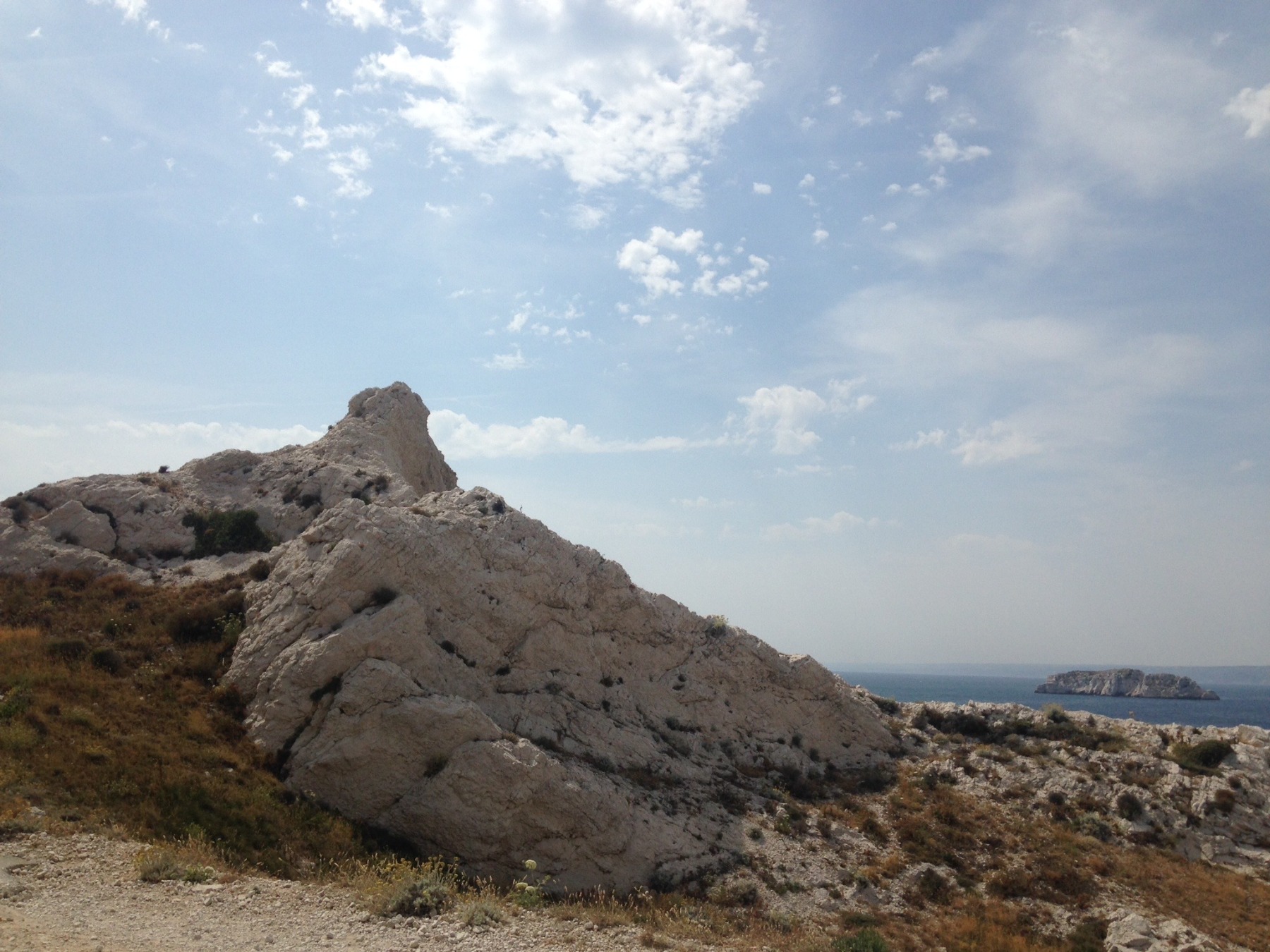
The building’s history is constituted by the epidemics spread by commercial trade and its adjacent migrations, but also by the proximity of trade to colonization by military intervention, and especially the history of violent conquest by Europe of those places and people it considers Other. We could think of the toxicity produced by these waves of variegated capitalist ideology as the primary characteristic of the atmosphere in which the Caroline Hospital operated, or that which it was constructed to isolate.
That night in the summer of 2015, gingerly holding a disposable cup full of dry, mineral Provençale rosé wine in one hand, I was not thinking about the incarcerated people dying of typhus in prison in 1941 who suddenly found themselves marooned on an island half an hour’s ferry ride from the Vieux Port. I was thinking about how the islands are outside of time, how they provoke and sustain a kind of suspension from reality, and about how badly I had been looking for such permission to suspend myself with another. It is this quality of the islands that makes them appropriate for a festival like MIMI, its program full of excessive sound and emotionally inchoate expression, and also appropriate as a place for those who came by sea for centuries to be still, in anticipation—or fear—of infection.
Photo: Natasha Marie Lloren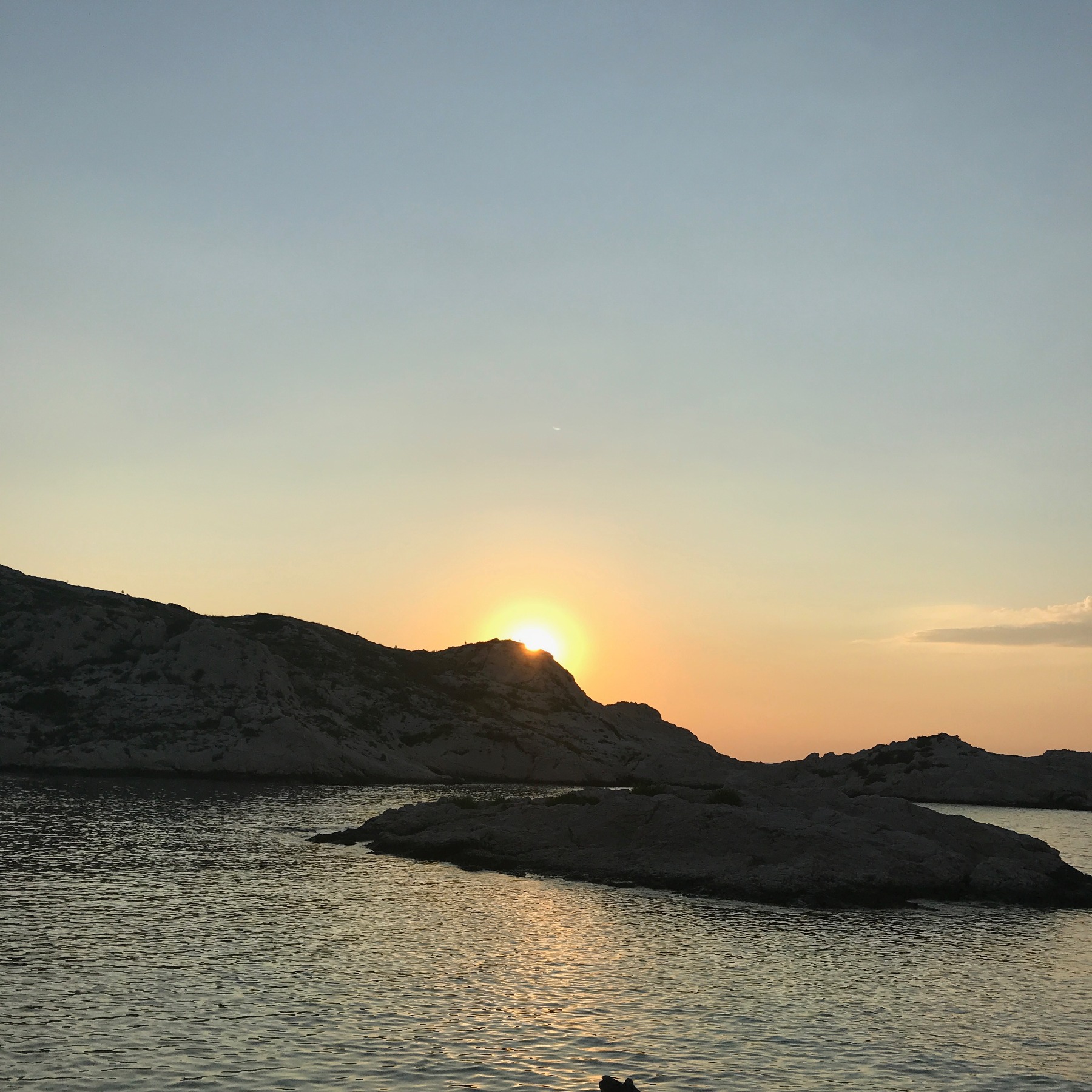
That day, I had arrived early in the afternoon to swim in the cold water that meets the rocky edges of the islands. I remember looking back at the island as I swam, following my lover out to sea in a slow backstroke. In the shimmer of mid-summer heat, I hallucinated a momentary image of men’s bodies sitting on these rocks and diving aimlessly off them as they counted the days of quarantine. Even now, the image is as clear as the water was on that afternoon. Sturdy, compact Mediterranean torsos emerging from old-fashioned, long striped bathing trunks. A man with his hands resting on his hips as his gaze is directed down at the water, listless in the afternoon sun that has an opaque quality at that time of year. I imagined the crew members of the Grand Saint Antoine, the merchant vessel responsible for the outbreak of bubonic plague known as the Great Plague of Marseille between 1720 and 1723. The island held them in place, suspended before the world, a ruse of stillness.
The Grand Saint Antoine shouldn’t have been on Pomègues, the main island of the Frioûl, had the sanitary regulations in place to guard against the plague been followed. It should have gone directly to the island of Jarre, a much smaller rocky bulge near the Calanques of Callelongue, just south of Marseilleveyre mountain. Captain Jean-Christophe Chataud should have had the ship and its cargo burned, but instead he requested routine quarantine on the Frioûl Islands. He knew the ship carried plague. Of the fifteen passengers that had boarded the merchant ship in the Syrian city of Tripoli, one died at sea. Seven sailors died within the next few days, in late April 1720. By the time the Grand Saint Antoine reached the islands on the May 25, 1720, plague-carrying fleas had infested its cargo. The captain’s non-declaration of plague allowed the crew first to transfer the contents of the ship’s hold to storehouses on the mainland in the neighborhood of La Joliette before returning to the Frioûl to begin a routine quarantine. Matter-of-factly, historian Christian A. Devaux describes the introduction of “quantities of cloth infested with fleas carrying the plague bacillus into a working-class neighborhood on May 29th 1720,” whose inhabitants spread the plague quickly throughout the city.[2]
Photo: Natasha Marie Lloren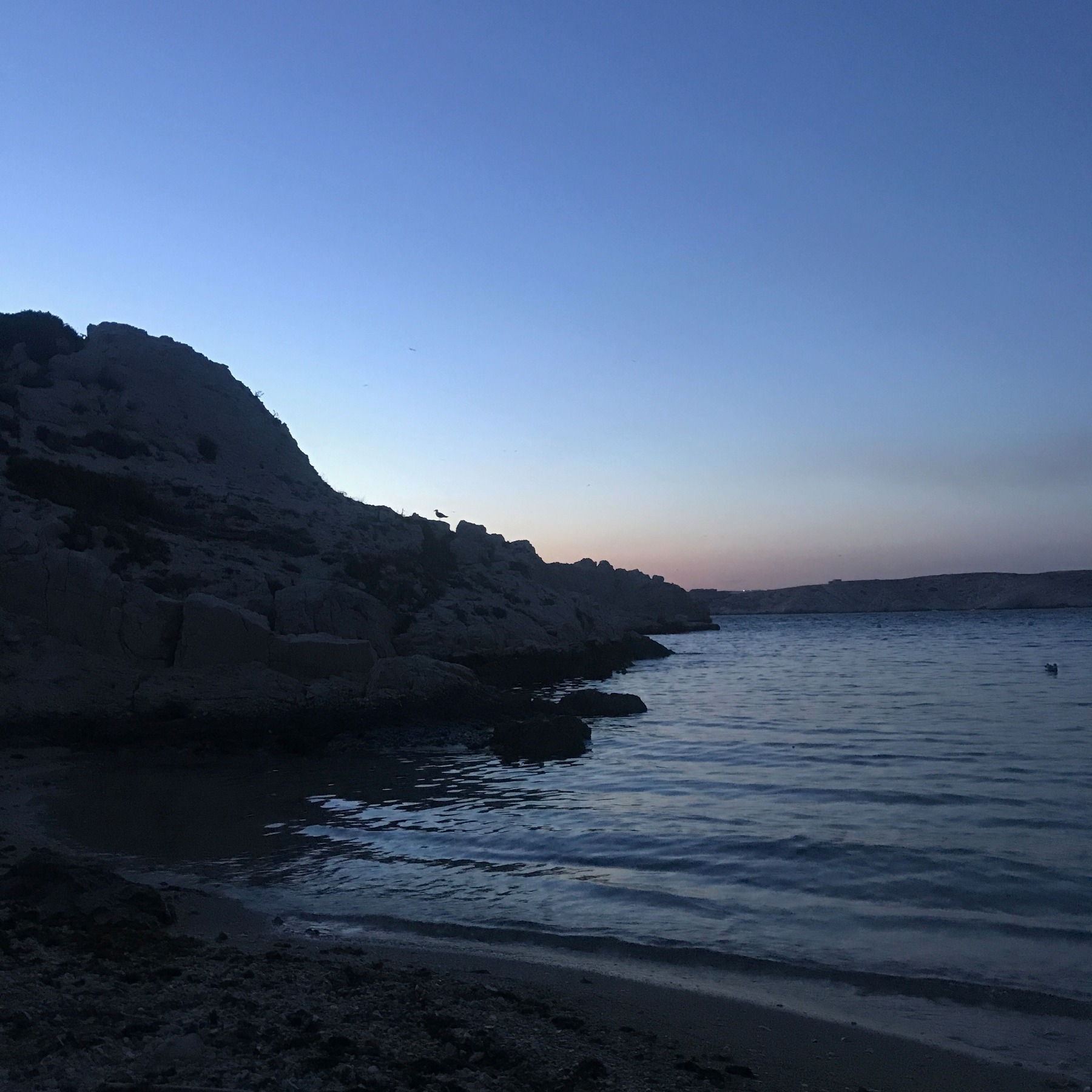
The ferry boat to the Frioûl Islands that leaves the Vieux Port at regular intervals during the summer months makes one other stop on its way to what is now the pleasure boat port of the main island. Chateau d’If isn’t really an island, since it is almost entirely occupied by a fortress that once served as a prison. Gaston Crémieux, the leader of the Marseille Commune—a solidarity movement with the revolutionary moment of the Paris Commune in 1871—was executed by firing squad there in 1871. Captain Chataud was jailed there for his lapse in judgement, which killed tens of thousands of people and threw Marseille into years of instability. I have always shuddered as the tourists leave the boat to sightsee at the Chateau d’If, unaware of its violent relationship the people of the city.
The Grand Saint Antoine was finally burned off the Island of Jarre on September 26, 1720, months after the plague was well-established in Marseille. A temporary reprieve from capitalist delusion. It would have been visible from the footpaths along the cliffs of Marseilleveyre, a large merchant ship at the end of an autumn day, flames whipping dangerously in the wind, in the process of disappearing beneath the waves.
Photo: Natasha Marie Lloren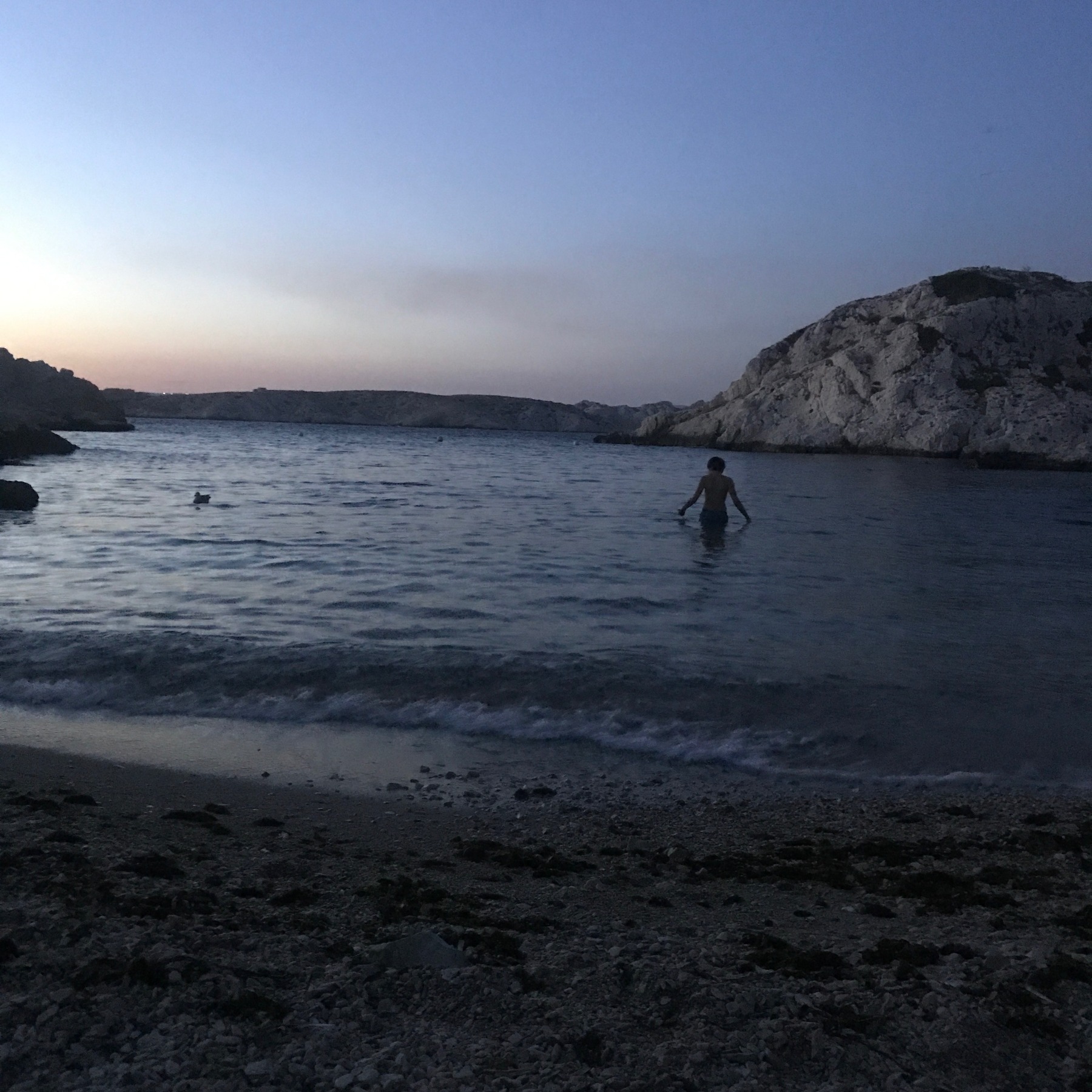
I return to the islands every year that I am in Marseille to drink rosé on the rocks and meet the sea. I swim out far from the shore, now with a confidence I learned from an ex-lover. I count the ghosts of sailors and Communards. There are more ghosts every year. It is as though they are crowded out by the aggressive gentrification in the city center, of La Plaine, and of La Joliette into a more “French” middle-class city. A four-star hotel was just finished in the working-class and largely North African immigrant neighborhood of Noailles, less than 500 meters from the buildings that tragically collapsed in 2018 on the rue d’Aubagne, the result of municipal neglect, killing eight people. The ghosts and I haunt the islands, where no one can build anymore and there is nothing to do but wait in anticipation of infection.
***
[1] There continued to be quarantine facilities in the city of Marseille and on its islands after the conversion of the Caroline Hospital. “However, in Marseille and on its islands, the ‘lazarets’ (infirmaries) still showed their usefulness at the beginning of the 20th century: of the 241,946 ship passengers arriving in Marseille in 1901, 3,353 were quarantined for symptoms of infectious diseases including 29 cases of plague resulting into 8 deaths.” Christian A. Devaux, “Small oversights that led to the Great Plague of Marseille (1720–1723): Lessons from the past,” Infection, Genetics and Evolution 14 (2013): 172. This reference gives a comprehensive overview of the developments that lead to the 1720 outbreak of the plague in Marseille. Basic historical details are available on the website for the municipal governmental archives. For an account of the building’s function as a quarantine site, see Jacques Chevallier, “A quarantine of plague at the lazaret of Frioul in 1901,” Histoire des sciences médicales 49, issue 2 (October 2015): 179–188.
[2] Devaux, “Lessons from the Past,” 172.